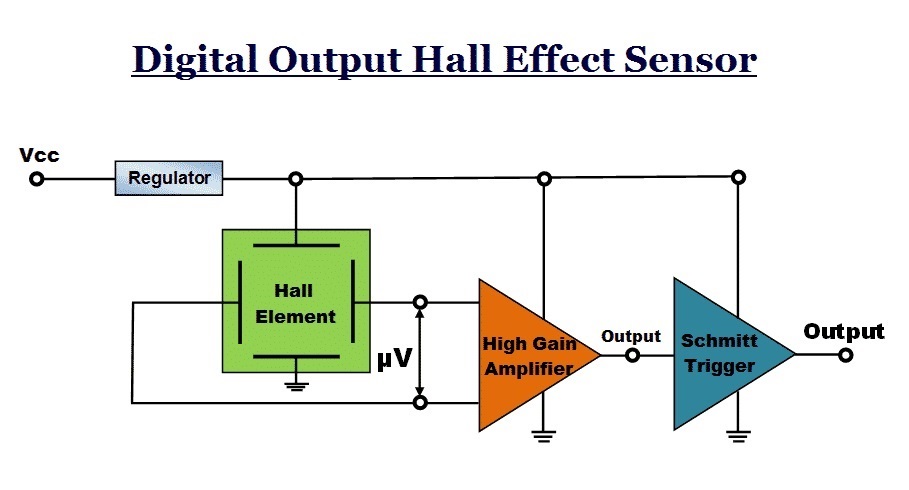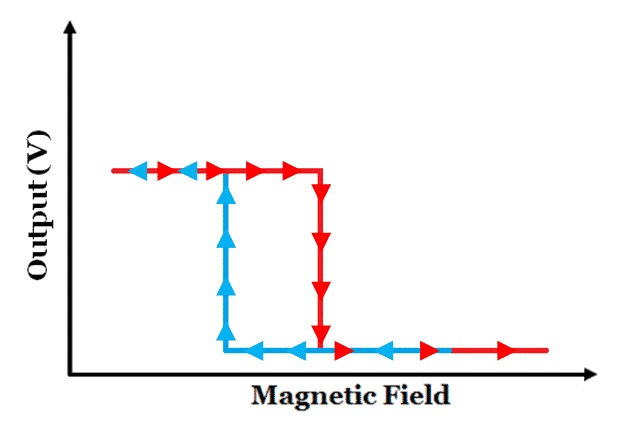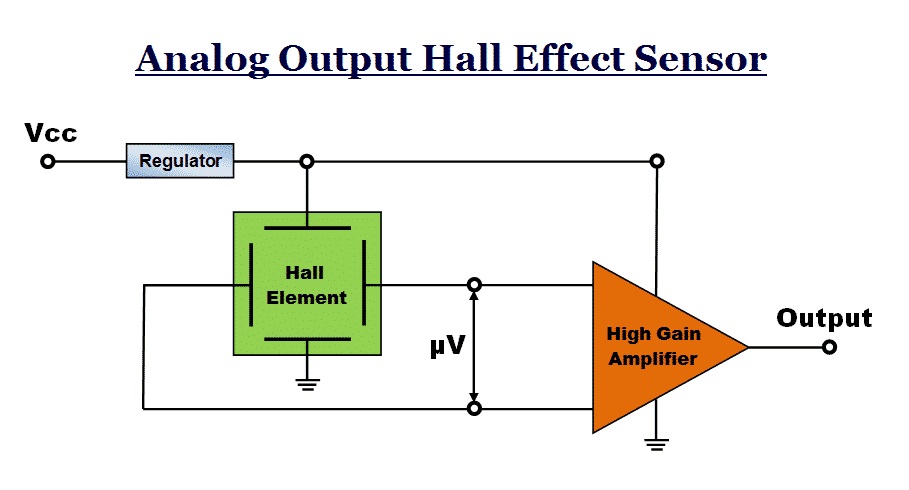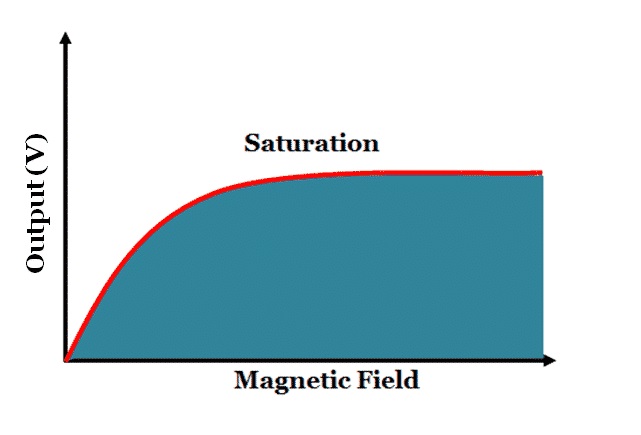According to the nature of the detected object, their applications of Magnetic Hall effect sensor can be divided into direct application and indirect application. The former is to directly detect the magnetic field or magnetic characteristics of the tested object, and the latter is to detect the artificially set magnetic field on the tested object. This magnetic field is the carrier of the detected information. Through it, many non-electrical and non-magnetic physical quantities, such as speed, acceleration, angle, angular velocity, revolutions, rotational speed and the time when the working state changes are transformed into electrical quantity for detection and control.
Hall effect sensors are divided into digital and analog types based on the output signal.
The output voltage of digital output Hall effect sensors has a linear relationship with the intensity of applied magnetic field.
Analog output Hall effect sensor consists of Hall element, linear amplifier and emitter follower, which outputs analog quantity.
Displacement Measurement
The two permanent magnets like Neodymium Magnets are placed with the same polarity. The digital Hall sensor is placed in the middle, and its magnetic induction intensity is zero. This point can be used as the zero point of displacement. When the hall sensor makes a displacement, the sensor has a voltage output, and the voltage is directly proportional to the displacement.
Force Measurement
If the parameters such as tension and pressure are changed into displacement, the magnitude of tension and pressure can be measured. According to this principle, a force sensor can be made.
Angular Velocity Measurement
Stick a piece of magnetic steel on the edge of the disk of non-magnetic material, place the hall sensor near the edge of the disk, rotate the disk for one cycle, the hall sensor outputs a pulse, so that the number of revolutions (counter) can be measured. If the frequency meter is connected, the speed can be measured.
Linear Velocity Measurement
If the switching Hall sensor is regularly arranged on the track according to the predetermined position, the pulse signal can be measured from the measuring circuit when the permanent magnet like Samarium Cobalt installed on the moving vehicle passes through it. The moving speed of the vehicle can be measured according to the distribution of the pulse signal.
Application of Hall Sensor Technology in Automobile Industry
Hall sensor technology is widely used in automotive industry, including power, body control, traction control and anti lock braking system
The form of Hall sensor determines the difference of amplification circuit, and its output should adapt to the controlled device. This output may be analog, such as acceleration position sensor or throttle position sensor; or digital, such as crankshaft or camshaft position sensor.
When Hall element is used for analog sensor, this sensor can be used for thermometer in air conditioning system or throttle position sensor in power control system. The hall element is connected with the differential amplifier, and the amplifier is connected with the NPN transistor. The permanent magnet NdFeB or SmCo is fixed on the rotating shaft. When the shaft rotates, the magnetic field on the hall element is strengthened. The Hall voltage generated is proportional to the magnetic field strength.
When the hall element is used for digital signals, such as crankshaft position sensor, camshaft position sensor or vehicle speed sensor, the circuit must be changed first. The hall element is connected with the differential amplifier, which is connected with the Schmidt trigger. In this configuration the sensor outputs an on or off signal. In most automotive circuits, Hall sensors are current absorbers or ground signal circuits. To complete this work, an NPN Transistor needs to be connected to the output of Schmitt trigger. The magnetic field passes through the hall element, and the blade on a trigger wheel passes between the magnetic field and the hall element.
Post time: Oct-25-2021



